Context
The recent report from the European Environment Agency (EEA) on Unequal exposure and unequal impacts: social vulnerability to air pollution, noise and extreme temperatures in Europe (Feb 2019) addresses how certain environmental health hazards affect various social-economic sectors of communities in Europe. While environmental conditions throughout Europe have improved over the past decades, in large part as a result of European policies, significant risks remain.
The report concludes, generally, that the environmental threats from air and noise pollution and extreme temperatures disproportionately impact people with lower incomes and education, and higher unemployment. The risks for all these populations are greater in urban areas. Such groups are also described as being more vulnerable to these threats. Young children and old people are particularly vulnerable, whether they are rich or poor. But of course, rich families have more resources to use to protect their young and old.
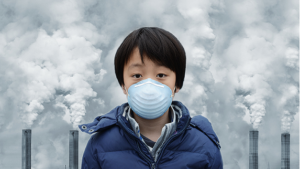
In some discourses this unequal treatment is a considered as a matter of environmental injustice. In the US, but not necessarily the EU, the environmental justice movement focuses on disproportionate adverse impacts on communities of color, though it also includes low-income communities. In the EU, the term tends to focus on socio-economic factors. For most purposes there is not much difference between the US and EU on this issue since communities of color in the US tend to be low income and education, and higher unemployment.
The general conclusions of the recent EEA report do not offer much in the way of surprises, at least in terms of who is affected and where they live. The EEA report does add valuable studies and discussions on what is being done, and not done, for them.
The Impacts and Vulnerable Populations
With regard to air and noise pollution, the report finds that the poor, elderly and children are particularly vulnerable in Europe’s eastern (Poland, Slovakia, Hungary, Romania and Bulgaria) and southern (Spain, Portugal, Italy and Greece) regions. It is in these areas where incomes and education are lower and unemployment rates higher, with elevated exposure to particulate matter (PM) and ground level ozone.
Even regions with more economic resources, especially in large urban areas, experience elevated levels of nitrogen dioxides (NO2) because of heavy vehicle traffic and greater industrial activity. But within these urban areas, the poorer communities are exposed to higher NO2 levels than the area’s general population. For example, nearly half of the most deprived neighbourhoods in London are exposed to NO2 values exceeding EU limits, compared with just 2 % of the least deprived neighbourhoods. At 22. The deputy mayor of London pointed out, in response to the EEA report, that the people in the richest areas of London own the most cars while the people in the most deprived areas have the lowest car ownership and suffer from the worst air quality.
And older citizens suffer disproportionately from air pollution. For example, in London air pollution levels were associated with the number of older people admitted to hospitals for cardiovascular and respiratory diseases, and in Dublin, a higher 30-day mortality in elderly hospital patients was linked to higher nitrogen oxide (NOx) pollution on their admission day. At 21.
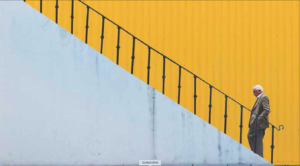
With regard to extreme higher temperatures, of course southern and south-eastern Europe are already hotter than elsewhere and will experience more extreme heat waves as result of climate changes. So it is no surprise to learn that the vulnerable populations in southern and south-eastern Europe are at greater risks, which are aggravated by socio-economic conditions. Of course the urban heat island effect of living in dense, concrete large cities presents risks from high temperature, even in northern cities in Europe.
Lower temperatures also present risks, especially for the large number of people who cannot afford the rising price of energy to heat their poorly insulated living spaces.
What is Being Done to Protect the Vulnerable
The EEA report also explores what EU policies have done and are doing for those at risk from the environmental threats. International agreements, on climate change and sustainable goals, and various EU directives and strategies, acknowledge the need for policies and actions to protect the most vulnerable. Yet there are few EU policies that actually require specific, concrete actions from Member states to overcome the inequalities of risk.
Local governments have been somewhat proactive in addressing the risks to vulnerable populations from extreme temperatures. There are plans in place in many locales for identifying those at risk from extreme heat or cold. Such programs have been around for some time for dealing with natural disasters and are being applied to climate-related emergencies, like extreme heat waves. However, identification of groups at risk is not enough and arrangements for relocating these populations to safe facilities, at least for short periods of time, is critical. An example of this more proactive approach is where retirement homes, filled with vulnerable people, provide cool or warm spaces within the facility where residents can seek relief from extreme temperatures, at least temporarily. A broader plan would deliver green spaces and a wide distribution of trees to provide shade and cool spots in applicable neighborhoods.
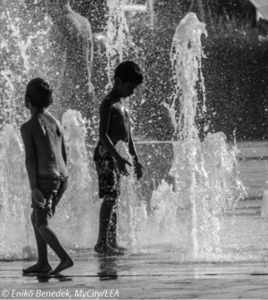
For air pollution, fewer actions have been identified by the EEA study. Of course reducing absolute levels of pollution is a necessary but insufficient means of addressing inequalities and disproportionate impacts. Typically action plans to deal with air pollution are directed at particular geographic locations or entire populations of an urban area that are experiencing elevated regulatory limits for air quality rather than at specific vulnerable groups within that area. For example, in the area of local planning and road management local governments have created low-emission zones and congested districts with restrictions or charges, but these are not often applied in areas where the poorer populations live.
Another initiative to fight air pollution is the banning of polluting heating fuels. Again, applying such actions city-wide does not necessarily reach the most vulnerable neighborhoods and sometimes the ban leads to an increase in fuel costs that adversely affects the poorer groups. For example, in 1990 the Irish government banned the marketing, sale and distribution of bituminous coal within Dublin city. As a result, air pollution declined by 70% and there were fewer deaths attributable to air pollution, especially in the group over 60 years of age. But the ban led to higher energy costs in Dublin. The wealthier were able to switch to, and pay for gas, but the poor had to switch to oil or solid fuels that cost more than coal. To deal with this greater inequity the government provided a fuel allowance during the winter months. Ireland has now embarked on a nation-wide ban on smoky coal and when fully implemented Ireland will be the first country to completely ban smoky coal. At 63.
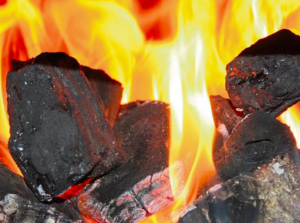
Insulating residences is of course a most useful protection against extreme weather events as well as against air pollution, but the cost for existing housing is prohibitive in many, if not most, areas. At least such measures need to be adopted for all new private and public construction, and substantial public funding for dealing with existing housing stock is likely necessary.
Conclusion: The missing dimension of enforcement
Missing from the discussion in the EEA report is the role of enforcement in relieving some of the inequities in air and other forms of pollution. With adequate enforcement powers and resources, it is possible to target enforcement actions against polluters that directly affect vulnerable neighborhoods.
For example, the New York State environmental agency (DEC) developed an enforcement plan to address the environmental risks associated with smoking, polluting diesel trucks in communities of color and low-income that have been disproportionately impacted by pollution throughout New York City, and later in other cities. Studies indicated, for example, that there were approximately 10,000 truck trips through East Harlem each workday. Some of these trucks were spewing out black smoke filled with pollutants. Asthma rates in these neighborhoods were some of the highest in the state.
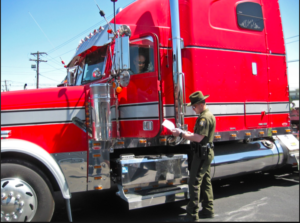
Under New York State law it is illegal for diesel trucks of certain sizes to emit black smoke above certain levels. The state agency has its own police department that enforces environmental laws and one of the duties of the officers was to look for smoking diesel trucks, pull them over, test for violations of the opacity rules and issue tickets, when appropriate. Thus, DEC officers already had responsibility for pulling over trucks, they had the training to spot and test for smoking trucks, and they had the equipment and training for testing.
The initiative involved converting the pullover operations from random acts of enforcement to scheduled and concentrated pullovers. About 12 agency police cars were assigned pullover operations on the four streets in East Harlem that carry truck traffic, and where the asthma rates were elevated. They deployed each morning for several hours for several days a week for a month at locations which were identified as heavy in truck traffic and had sufficient space to pull trucks over, inspect and ticket.
Based on that operation, DEC estimated that close to 20 percent of the trucks traveling the area were out of compliance with state air regulations. With transportation studies showing there were approximately 10,000 trucks travelling daily through this corridor, that means that were nearly 2,000 trucks emitting illegal levels of pollutants every workday in East Harlem. Following the pilot project, DEC implemented the Stop Smoking Trucks pullover operation in environmental justice communities in every borough of New York City as well as every one of the DEC nine regions state-wide.
Where there’s a will, there’s a way, given sufficient resources.
Sources
European Environment Agency, Unequal exposure and unequal impacts: social vulnerability to air pollution, noise and extreme temperatures in Europe (February 2019). www.eea.europa.eu/highlights/protect-vulnerable-citizens
Arthur Neslen, “Europe’s most deprived areas ‘hit hardest by air pollution’,” The Guardian (4 Feb 2019). bit.ly/2GngLC0
The author was involved in designing and implementing the Stop Smoking Diesel Trucks initiative at the New York State Department of Environmental Conservation (DEC) (2007-09). For a fuller discussion of the initiative, see STOP SMOKING DIESEL TRUCKS in ieBLOG section of irish environment (May 2017). bit.ly/2SCpeIQ


No comments yet, add your own below